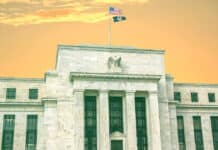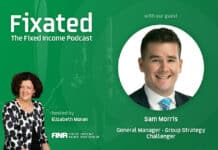
From Benoit Anne, Senior Managing Director, Head of Markets Insights Group & Erik Weisman, Chief Economist, MFS Investment Management
Market Insights
-
How to hedge rising geopolitical risks
-
The Fed still in wait-and-see mode
-
Some market metrics that should provide some comfort
-
Credit default rates still at historically low levels
Hedging rising geopolitical risks. Given the escalating tensions in the Middle East triggered by the conflict between Israel and Iran, it is probably worth addressing geopolitical risk hedging. To be clear, geopolitical risks are virtually impossible to position for. Geopolitical events are by definition unpredictable: first, the probability of a potential geopolitical crisis occurring is very difficult to ascertain. Second, its timing is always uncertain, and finally its magnitude, its duration, together with its possible ramifications, are difficult to anticipate. With that in mind, we believe it is challenging or even counterproductive from a risk management perspective to position portfolios with the sole objective of protection against geopolitical risks, simply because a geopolitical crisis can be likened to a “black swan” event. There are nonetheless useful strategies that investors can implement to optimize their geopolitical risk management. First and foremost, some portfolio diversification is essential, both in terms of asset classes and regional exposures. Fixed income, especially government bonds, has helped mitigate the return impact of geopolitical crises historically. More importantly, commodities—especially oil—offer some attractive defensive characteristics when it comes to the potential impact of geopolitical events. Indeed, when looking at the market response to past geopolitical shocks, we have observed that the oil price has historically been the best market hedge. On this basis, some exposure to energy sectors and oil-producing country currencies may make sense as part of a diversified investment strategy. – Benoit Anne
Still seeking clarity. The Fed meets this week in the context of a challenging macro and market backdrop. On this basis, we do not anticipate much novelty from the Fed. The only area of interest may come from the new set of forecasts under the Summary of Economic Projections (SEP), which may point to slightly slower growth, combined with slightly higher inflation. Likewise, we will also be watching the “dots”, The Fed’s internal policy rate forecasts, which may potentially shift to signaling one single cut this year. Overall, none of that is likely to catch investors by surprise. The Fed will therefore stay the course, be patient, and await more clarity on the potential macro impact of higher tariffs. With that in mind, we expect an encore performance by the Fed Chair, who, at the last press conference, scrupulously followed the Greenspan communication playbook. After all, the legendary Fed Chair who officiated at the helm of the Fed from 1987 to 2006 is known to have once stated: “Since I’ve become a central banker, I’ve learned to mumble with great incoherence. If I seem unduly clear to you, you must have misunderstood what I said.” In other words, the Fed will likely acknowledge that the backdrop remains confusing and the best course of action is just to do nothing. As for potential rate cuts, it is fair to assume that they have been pushed back, and it looks like none of them will be delivered before Q4 this year. – Erik Weisman
Also read: Australia’s Bond Market in a Volatile World
Some reassuring market metrics. Despite the challenging backdrop, there are a number of indicators that should provide some comfort. For a start, rate volatility, as illustrated by the MOVE index, has corrected lower, having broken the 100 barrier to the downside.[1] This is typically a positive signal for fixed income, although the absolute level remains somewhat elevated by historical standards. Moving on to policy uncertainty, we are now well off the highs of liberation day. It is still a complicated world global investors have to deal with, but we may already have seen peak policy uncertainty. More positive news, this time coming from financial conditions: according to the Fed, financial conditions continue to act as a tailwind for economic growth—albeit a modest one.[2] There were some legitimate fears that the market would tighten on behalf of the Fed given the risk of stagflation but this is not happening so far. Finally, the stock-bond correlation continues to correct lower, and is now well off its peak of January 2025, thereby helping fixed income to regain its diversification benefits. – Benoit Anne
The death of the credit default cycle? While investors have been worried about the growth outlook, with fears of recession resurfacing somewhat, there is one important market variable that suggests that there is no cause to panic: high-yield credit default rates. Based on Moody’s data, there is no evidence of a worrisome erosion of credit fundamentals. In particular, the current default rates are still at around 3.5% in the US and even lower in Europe.[3] More importantly, Moody’s does not anticipate the default rates to rise going forward, unless of course a catastrophic shock occurs. Under a benign macro scenario, Moody’s forecasts global HY default rates to edge lower over a one-year horizon, and in the process stay at historically low levels. This does not surprise us. While monitoring asset class fundamentals, we have observed that high-yield credit—both in the US and in Europe—has displayed strong resilience. Indeed, the main challenge for HY is not a fundamental one, but rather a valuation one, with credit spreads remaining on the tight side. Overall, there are plenty of potentially attractive opportunities in HY, but it requires a robust credit analysis process. – Benoit Anne
Notes
[1]Sources: Bloomberg, ICE-BofA. The MOVE Index measures U.S. bond market volatility by tracking a basket of OTC options on U.S. interest rate swaps. Data as of 13 June 2025.
[2] Sources: Bloomberg, Fed. US Federal Reserve Financial Conditions Monthly One-Year Lookback, as of April 2025.
[3] Sources: Moody’s April 2025 Default Report, 19 May 2025.

































